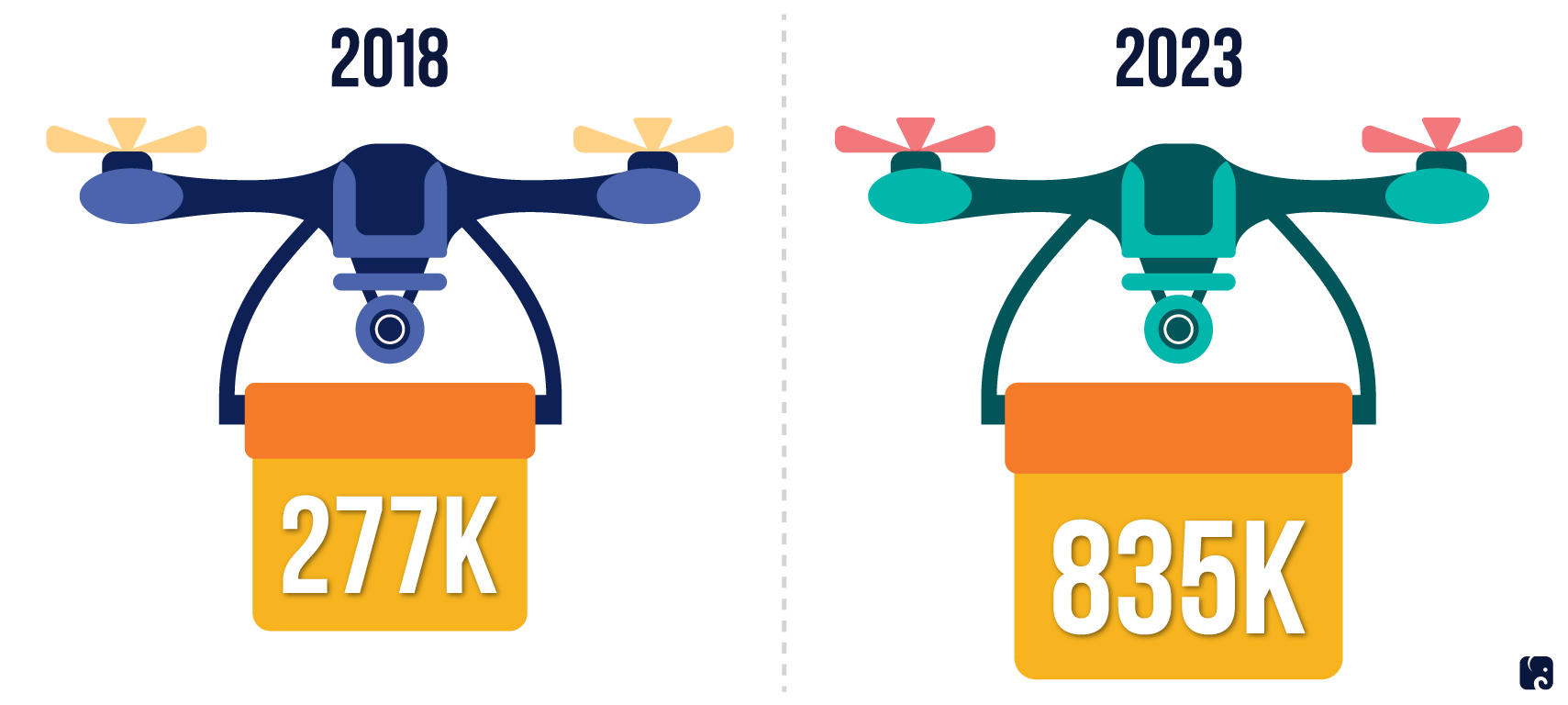An Update on Drone Policy
KEY TAKEAWAYS
- The Federal Aviation Administration expects the number of commercial drones to triple by 2023, given their many uses in industries such as agriculture, energy, and construction.
- Current rules limit how and where people can fly drones, though businesses and governments can apply for waivers.
- The administration is working on several initiatives, including creating a system for managing increased drone traffic and amending the rules so drones can routinely fly under more conditions.
Congress is overseeing efforts to safely integrate drones into the national airspace. More people are flying drones for recreation, and the U.S. military already uses drones in its operations. Most of the growth is expected to be in the commercial drone market, as the technology advances and businesses find new ways to use the devices. At the end of 2018, there were 277,000 registered commercial drones, and the Federal Aviation Administration expects the number will triple within five years.
Commercial Drone Use Expected to Grow Rapidly

Companies are investing in drone technology, with one study estimating the market will reach $17 billion by 2024. Drones can do tasks that are costly or dangerous for people, such as surveying large swaths of farmland or helping firefighters put out wildfires. Some utility and energy companies are using them to inspect facilities, retail companies use them for warehouse inventory, and state departments of transportation are using them for bridge inspections.
As with other technologies, drones pose security and privacy risks. People could use drones for attacks or to conduct unauthorized surveillance. They could use the devices to commit cybercrimes and steal sensitive information. Recent incidents at airports raise the threat of costly and dangerous air travel disruptions.
rules for flying drones
Federal rules require that fliers of small drones must pass an aeronautical knowledge and safety test, register with the FAA, and mark their drones with the registration numbers. In general, federal rules also limit drones to flying below 400 feet, during the daytime, and at no more than 100 miles per hour. Drones have to remain within sight, and they are not supposed to be flown over people.
Limits on Where and How Drones Can Fly

For more complex drone flights, commercial operators have to get specific authority from the FAA. The agency allows waivers of some of the current limits, but the process takes time and does not allow for routine flights outside of the current limits.
Some companies have applied for more general certifications for drone flights. In April, the FAA gave Wing Aviation a limited air carrier certification, which allows it to deliver packages in Blacksburg, Virginia. In early October, the agency announced a more comprehensive certificate for UPS, which plans to expand its health care supply delivery operations and eventually deliver other goods.
recent policy changes
In recent aviation reauthorization laws, Congress has directed the FAA to implement policies to address safety and security concerns with drones and to allow them to be used under more conditions. The 2018 reauthorization law gave the departments of Justice and Homeland Security authority to counteract threats from drones. The Defense and Energy departments have similar authority.
The FAA is drafting a rule that would set standards for remotely identifying drones and their operators. Such a system is seen as an important part of making commercial drone flights possible on a routine basis. It would give law enforcement officials and the FAA recourse when drones are flying in unauthorized ways.
Earlier this year the FAA proposed a rule to permit drones to fly at night and above people in certain conditions. It noted that most waiver requests submitted are for flying at night, and no accidents had been reported under these waivers. The rule would require operators to test or train for nighttime flights and require drones to have anti-collision lights. To ensure safe flights over people, the rule would categorize drones based on weight and other factors and would require manufacturers to meet design standards to help prevent injuries.
The FAA also is running two pilot programs, including one with NASA to create a system that can quickly and safely manage drone traffic.
Next Article Previous Article
